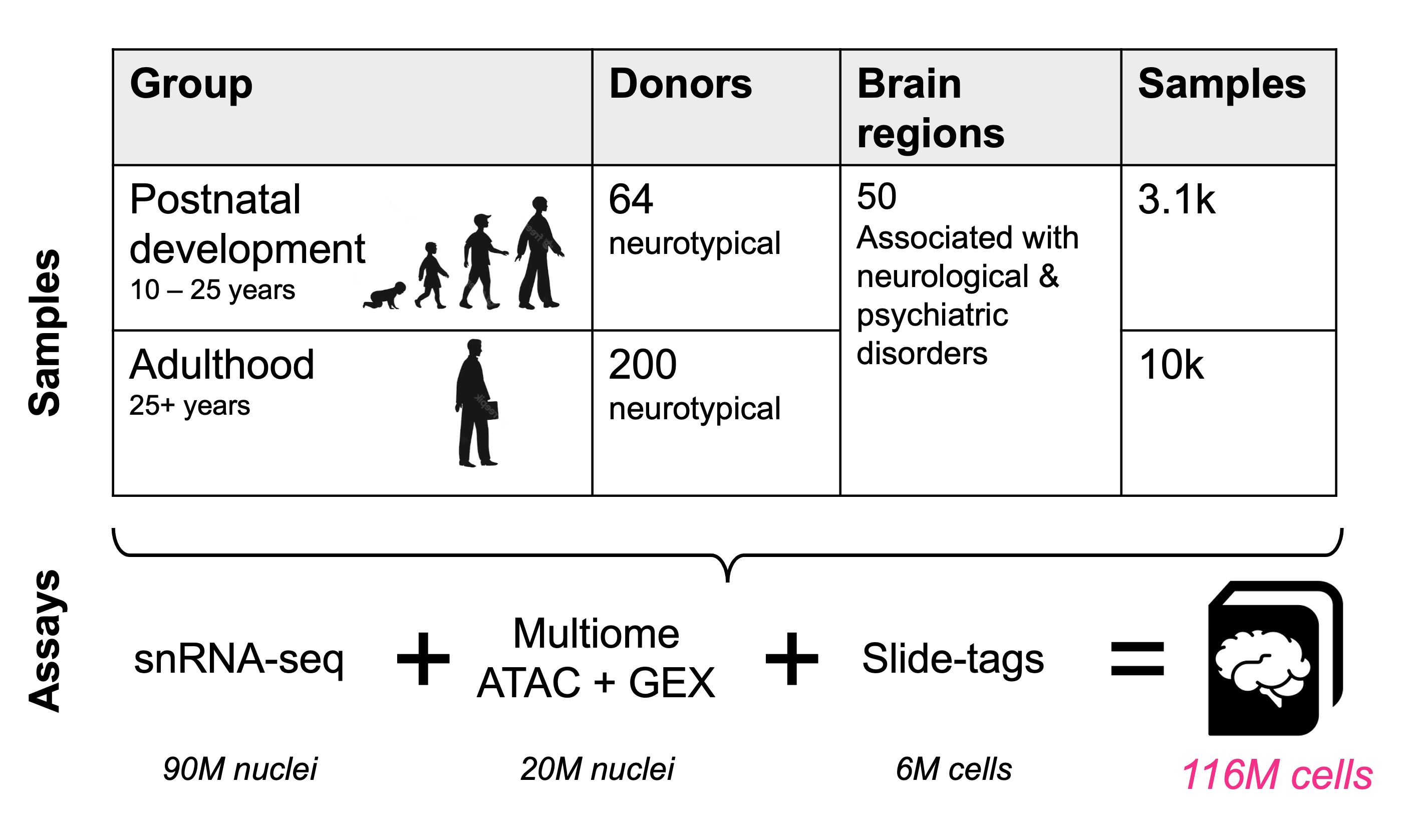Research
The human brain is among the most complex biological objects known: more than 100 billion highly specialized cells, connected in specific ways, cooperate to engage in problem-solving, observation, empathy, insight, and direction of the human body. And yet, one of the most striking aspects of human experience involves variation in brain function: no two individuals think or behave in the same way. This variation drives humanity’s creativity and resourcefulness; it also shapes each person’s vulnerability to neurodevelopmental, neuropsychiatric and neurological disorders, through mechanisms that are still unknown but critical to understand. To fully understand the brain’s function and vulnerabilities, we must know and be instructed by its biological variation across people.

In this work, we will leverage new technologies in single-cell and spatial genomics, including many developed in our labs, to construct an atlas of human brain cell variation. By making molecular measurements of cell types across many people, in their spatial contexts, and including measurements across the course of postnatal development, our atlas will simultaneously inform our understandings of:
- The common, shared cellular features that make all of our brains work
- The ways in which these features vary and co-vary across individuals
- The relationship of this biological variation to genes, alleles and biological function
- The tissue-based mechanisms of genetic risk for neurodevelopmental and neuropsychiatric disorders
Our center will be applying the same approaches to other neurological disease and trait-focused projects, e.g., schizophrenia, Huntington’s disease, bipolar disorder, and aging.
Research goals
Construct an atlas of human brain cell variation during development and adulthood
We will construct an integrative atlas of cell types within 50 major brain regions associated with neurological and psychiatric disorders. We will deeply study inter-individual variation by analyzing each of the brain regions during postnatal development (ages 10-25; 64 neurotypical donors) and adulthood (ages 25+; 200 neurotypical donors). In total, we will profile >13,000 samples and >116,000,000 nuclei using the latest single-cell multi-modal technologies.

Characterize human brain biological variation
We will estimate the cell type abundance and spatial distribution, expression, and DNA accessibility in the thousands of brain samples and will identify how these features vary and co-vary across individuals.

Use variation to reveal and understand biological function
Using the cell atlas resource, we will examine how genetic variation shapes the biology of cell types, brain tissue and brain vulnerability.

Our atlas of human brain variation aims to capture the variety of normal human brain biology in a suitably open way. Our objective is to sample variation broadly, not to compare groups. A pitfall we must avoid is to appear to make (or enable others to make) conclusions about any groups from what will likely be a small sample from a large, neurodiverse population.
We believe that the point of including a varied set of donors is not to compare groups, but rather to define the range of normal human brain biology in a suitably open way. This ethic will be reflected in the analyses we do and the analyses we choose not to do.
The successful completion of this research will deliver an essential data resource for cellular, molecular, genetic and translational neuroscience. The work will also expand our understanding of the ways the human brain varies from person to person and provide powerful new ways to learn from inter-individual variation in brain phenotypes.
Foundational video introducing the Center’s research vision
In this BroadWay talk, Evan Macosko and Steve McCarroll explore the potential of how an atlas of the variation in brain cells and molecules across individuals will help us understand how the brain works and what makes it vulnerable to disease. Watch the full talk below or on youtube. The BroadWay seminar series showcases Broad research and is designed to be accessible to all audiences.